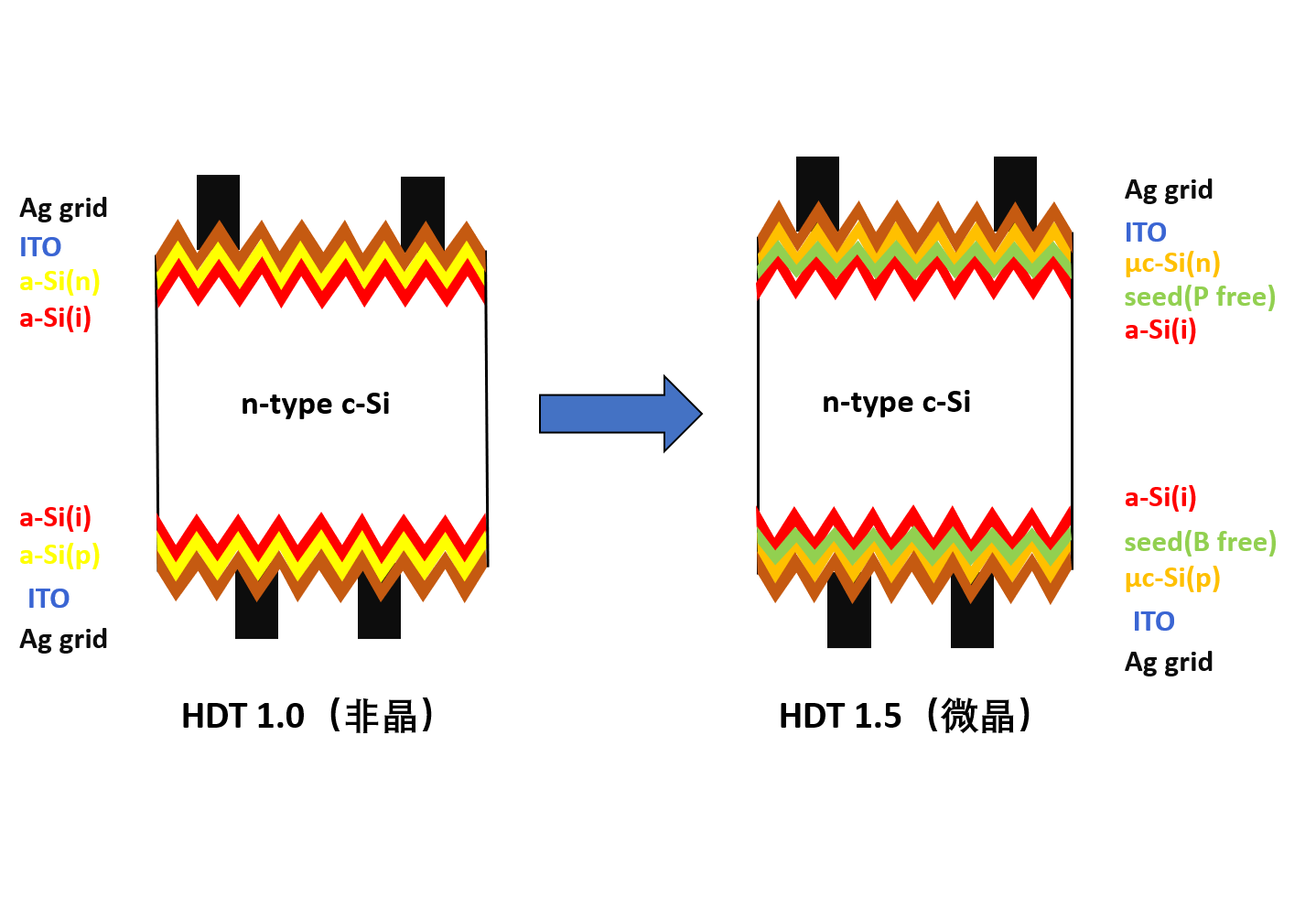The next generation of photovoltaic mainstream technology
Compared to those solar cell manufacturing that have more than 10 steps of processing, HJT cells only need 4 steps, all at low temperatures. The streamlined process effectively reduces production costs and carbon emissions and is more in line with the needs of the "dual carbon" target
1、How to produce HJT cells?
1). cleaning texturing
Immerse the N-type monocrystalline silicon wafer into the alkali liquid with a specific concentration. Through process control, a fine and uniform pyramid-shaped appearance will be etched out along the specific crystalline direction.
2). PECVD
In the condition of vacuum, the gaseous reactant that contains the elements which can constitute thin film will produce chemical reaction to form amorphous silicon thin films on the surface of the substratum by means of particle bombardment or thermal decomposition.
3). PVD
In the condition of vacuum and high pressure, TCO particles are deposited on the substratum by physical vapor deposition or evaporation to form TCO film.
4). screen printing
The paste is extruded on the front and back sides of the silicon wafer through a specific pattern to create a very detailed circuit pattern, and the collected current is exported to the cell.
2、Why to produce amorphous silicon thin films?
Amorphous silicon thin film is the core of HJT cells and the foundation of cell power generation. Utilizing the excellent passivation effect of amorphous silicon, the minority carrier lifetime of silicon wafer can be greatly improved.
3、Why to produce TCO film?
Due to the poor electrical conductivity of amorphous silicon, adding a layer of TCO film between the electrode and amorphous silicon can effectively increase the collection of charge carriers during the fabrication of HJT cells.
4、What microcrystalline technology can bring to HJT?
The microcrystalline HJT cell technology is a method of using doped μc-Si or doped μc-SiOx to further improve the doping concentration to increase the light transmission performance and reduce the resistance of the doped layer, so as to enhance the current density eventually. The conversion efficiency of the cell made by this method is 0.5% higher than that of the amorphous doped layer cell. There is still space to gain 0.3%-0.4% improvement in cell efficiency.
